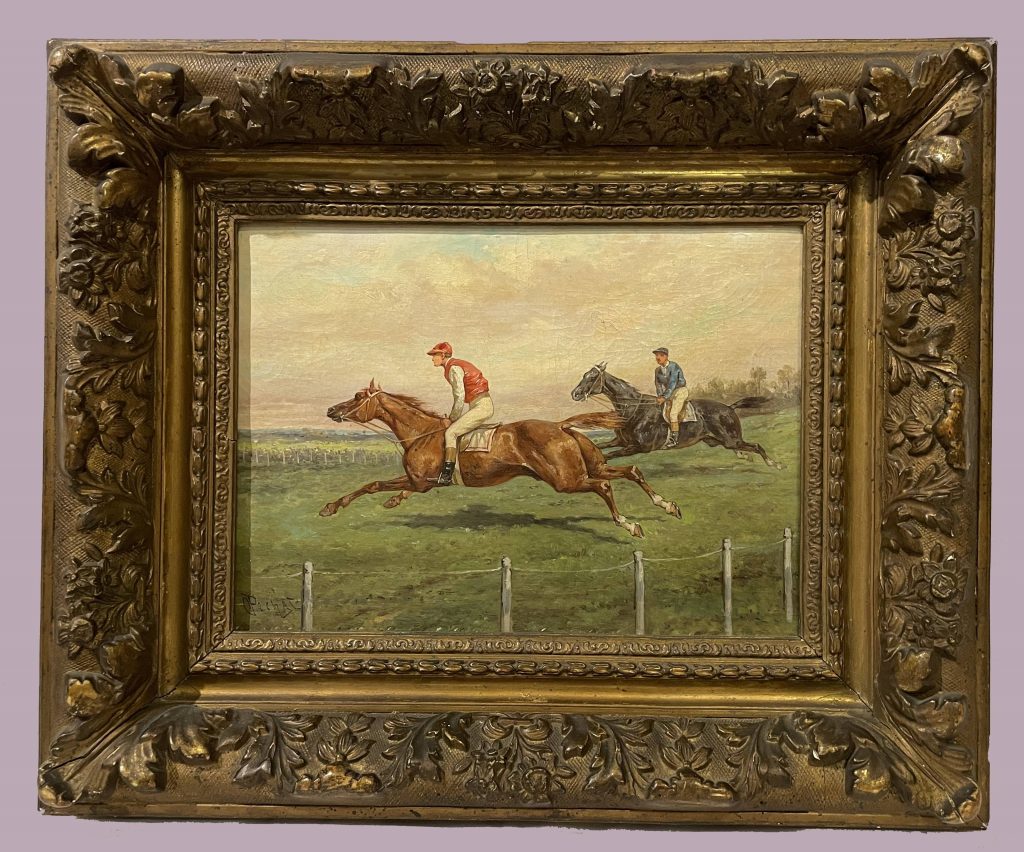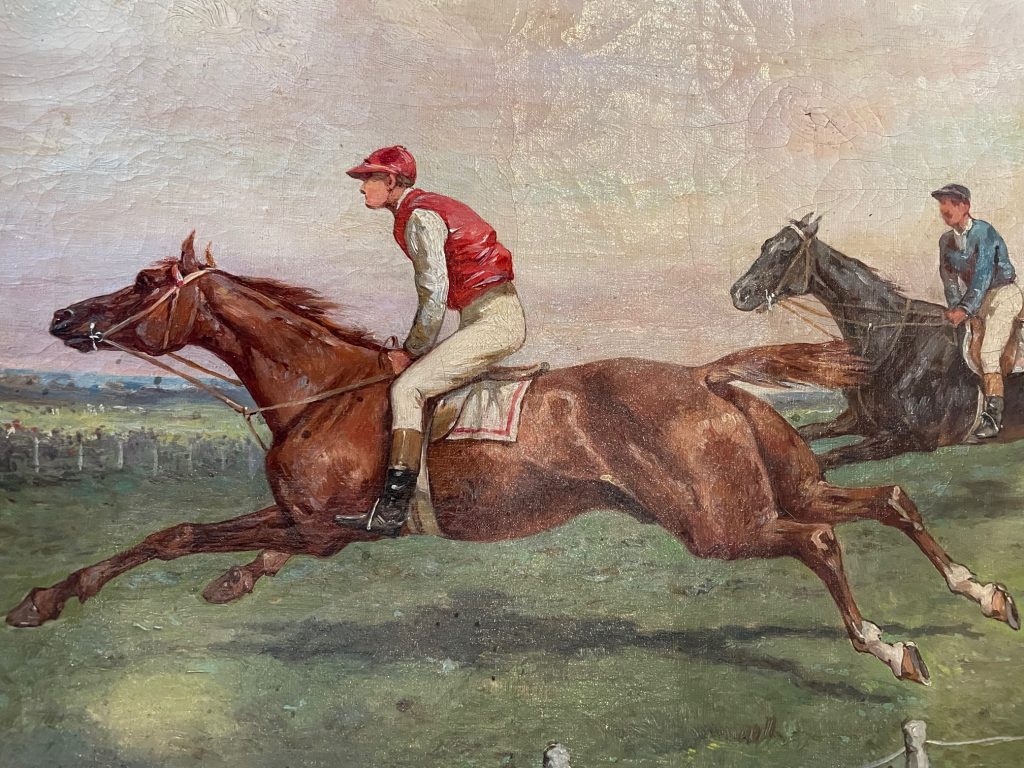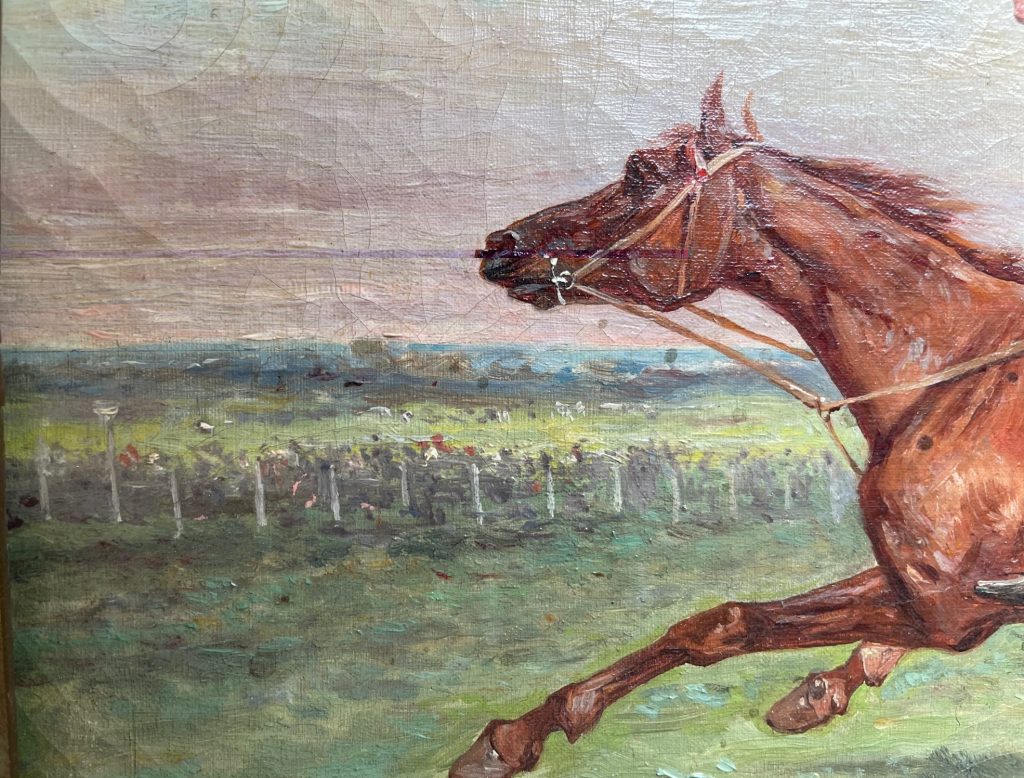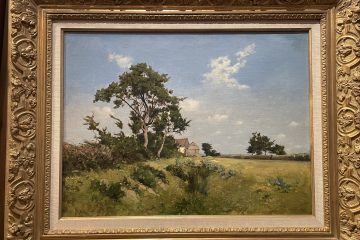
Huile sur toile
50 x 42 cm avec le cadre
Olivier Pichat ( 1823 – 1912) fait partie de ceux que l’on appelle les » sporting painters ». Très en vogue en Angleterre dès le 18e siècle avec des artistes comme George Stubbs ( 1724-1806), cet art se transforme au 19e siècle pour assurer des sortes de reportages sur les champs de course avec en point d’orgue le Derby d’Epsom qui deviendra un des chefs d’œuvre de Géricault en 1921 ( conservé au Louvre)
Ce genre pictural restera marginal en France, seuls quelques peintres anglophiles comme Carle Vernet ou Alfred Dedreux reprendront les codes anglo-saxons. Dans ce tableau l’artiste a traduit l’agitation de l’hippodrome en filigrane derrière la scène des chevaux en pleine action.
Le musée d’Orsay conserve un fonds photographique important constitué par Olivier Pichat. Ce fonds rassemble des scènes militaires, mais aussi des paysages orientaux. Ces photographies ont été la base de mises en scène en vue de la réalisation de ses peintures.
Elève de Picot, il débute au Salon de 1881.
Son apprentissage auprès de François Edouard Picot (1786-1868) a sans doute été déterminant quant à formation classique; en effet, François Picot, élève de David a reçu le second grand prix de Rome en 1811, et après son séjour à la villa Médicis, il peint des scènes dans la plus pure tradition néo-classique.
Olivier Pichat peint à plusieurs reprises Napoléon sur son cheval au camp de Boulogne, à St Hélene. Il peindra aussi le prince impérial sur son poney, tableau exposé au Salon de 1861 et conservé au château de Compiègne, ainsi qu’un autre portrait du prince impérial en 1870.
Dans tous ces tableaux d’histoire, le cheval tient une place importante et on peut remarquer sa maîtrise dans l’exécution de l’animal.








